I’m sure you’ve heard it many times already. And although you have a slight idea, you don’t understand exactly what storytelling is.
In a nutshell, storytelling consists of using facts and narrative to communicate a message.
And you may wonder, but what does storytelling have to do with selling a product or service?
Well, I’m glad you asked this question because we’re going to talk about it in depth in this post.
When you reach the end, you will understand better what storytelling is and how you can use it to sell more with your business.
Do you like stories?
Maybe you don’t think so because you haven’t read a fiction book in a long time and it’s hard for you to come up with a story when your children or nephews ask for it.
But I’m sure you’re listening to stories all the time without fully realising it.
There are stories everywhere since the advertising industry makes use of this art very often.
After all, telling a story that engages and excites is an art and, like any art, it’s all about practice.
You don’t have to be J.K. Rowling to be able to create stories that make your customers identify with your personal brand.
You need to think about what might interest your target audience and tell a credible story that relates to them.
This doesn’t mean that every story you tell has to be 100% true, you can use as a base a fact that did happen and embellish the story to make it more attractive.
But remember, if you get too imaginative and the person who is reading doesn’t believe a word of what you’re saying, it can become counterproductive.
Let’s look at an example of a very well-created story before moving on to a more in-depth look at what storytelling is.
This Smart ad lasts only 40 seconds and is one of the best examples of storytelling you’ll ever find.
Let’s see why.
The Smart is a popular vehicle for being an easy two-seater to use and park in busy city centres.
With a very funny joke, Smart tells us that the car is still compact and easy to park but that now there is room for 4 people.
A good story doesn’t have to be long, in 40 seconds you can say a lot.
Let’s see how you can tell stories that grab your target audience.
Are you staying?
Why you should tell a story
Stories have always inspired and created a sense of community in both those who hear them as well as in those who tell them.
Before writing was an extended skill, wisdom was passed from parents to children through stories.
That’s why we have so many sayings and folklore.
It’s curious that many of these sayings are the same in many countries, only they are told in different languages, so we deduce that this folklore and sayings crossed kilometres and cultures.
The main reason that so many folklore sayings and stories were told was to educate and to engrave a message in people’s minds.
Like father, like son, the milkmaid story … All these stories were intended to motivate, educate and endure.
Stories make us human and the same goes for brands.
When brands become transparent and authentic, it brings them closer and helps consumers connect with them and with the people behind them.
Today there is a debate about the legitimacy of using important social issues for commercial purposes.
Many brands are becoming standard-bearers for causes that concern people, such as machismo, global warming or racism.
There are people who criticise these brands because they pretend to own vital causes and in reality what they are looking for is only to increase sales.
In my opinion, it doesn’t have to be seen in such a radical way.
Because in the end behind each brand there are also people who in turn are concerned about a certain issue and that’s why they use it in their campaigns.
Let’s take as an example Nike’s latest ad which has gone viral.
https://www.youtube.com/watch?v=whpJ19RJ4JY
The reality is that this ad, whatever opinion you might have on the subject, is excellent. Because it follows the main principles of storytelling.
It moves, motivates, creates a sense of community, tells the story of a protagonist (women), narrates a knot (negative stereotypes) and an ending (encourages women to keep fighting no matter what people think).
To better understand how to create a story that grabs your audience, let’s break the process down.
Elements of storytelling
Storytelling is not much different from writing fiction.
If you’ve ever been to a creative writing workshop, these elements will ring a bell.
A protagonist
Every story needs a protagonist that your audience can identify with.
That protagonist can be yourself telling your own story as an entrepreneur, or a customer, narrating a success story, or a collective, like in Nike’s ad, where women are the main characters.
It has to be a person with whom your target audience can identify themselves and for that, as I always repeat in all my posts, you need to know very well who your ideal customer is.
A conflict
This is usually a negative situation from which the protagonist has to get out of.
If, for example, you tell a success story of a client, you can tell what the situation was before and how you helped the person get out of it.
Let’s see a great example of storytelling by Airstream.
This travelling trailers manufacturer has been in business since the 30s and on their About us page we can read the exceptional story of the creator Wally Byam.
It’s a great story because it tells the struggles of a man in a difficult period, the Great Depression in the US, and how he came with a clever idea to show the world how light his trailers were.
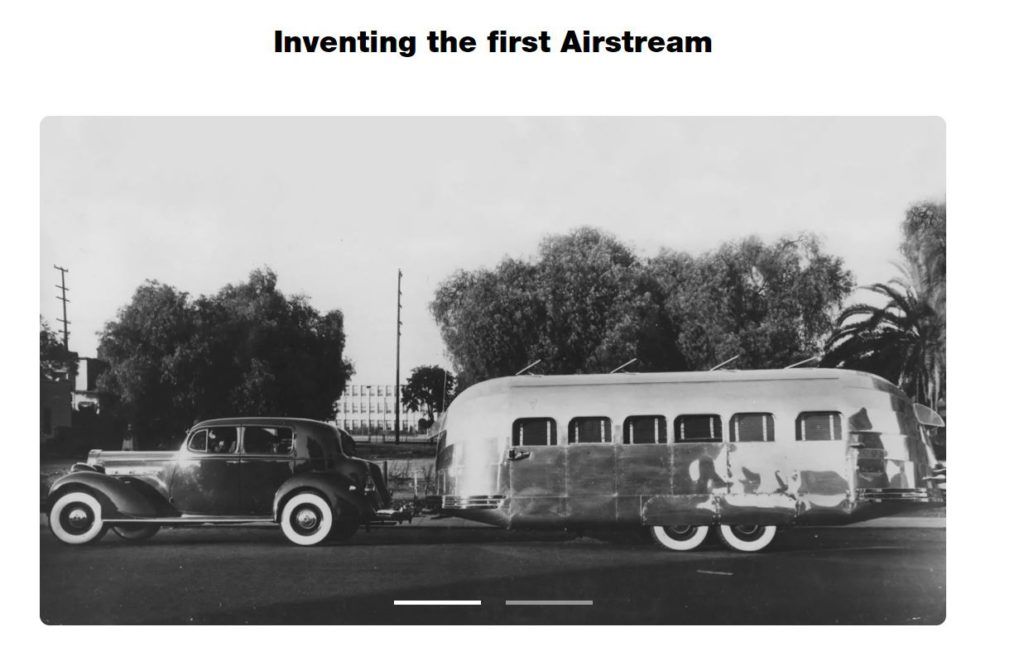
“After graduating college, Wally used his experience on the Stanford school newspaper to earn him several jobs in advertising and journalism in Los Angeles.
On the side, Wally became a publisher, and by the late 1920s, he owned seven magazines.
Around that same time, Wally met and married his first wife Marion James. Together they went camping regularly, but Marion never loved sleeping on the ground in a tent.
When the stock market crashed in 1929, Wally’s magazines went under, and he needed a new venture. It was then he got the idea to build a travel trailer not unlike the wagon he lived in as a child on the farm – but one Marion would actually enjoy camping in.
He started with a Model T chassis with a tent contraption on top. But it was tedious to put together onsite, and it didn’t provide protection from the elements.
So he took that same platform and built on it a tear-drop shaped structure with sleeping space, a stove, and an ice chest.
Wally and Marion took the trailer on a camping trip and loved it as much as their fellow travellers did – along with their neighbours when they got home”.
How to use the power of #storytelling to elevate your brand. #copywriting #DigitalMarketing #SmallBiz Share on X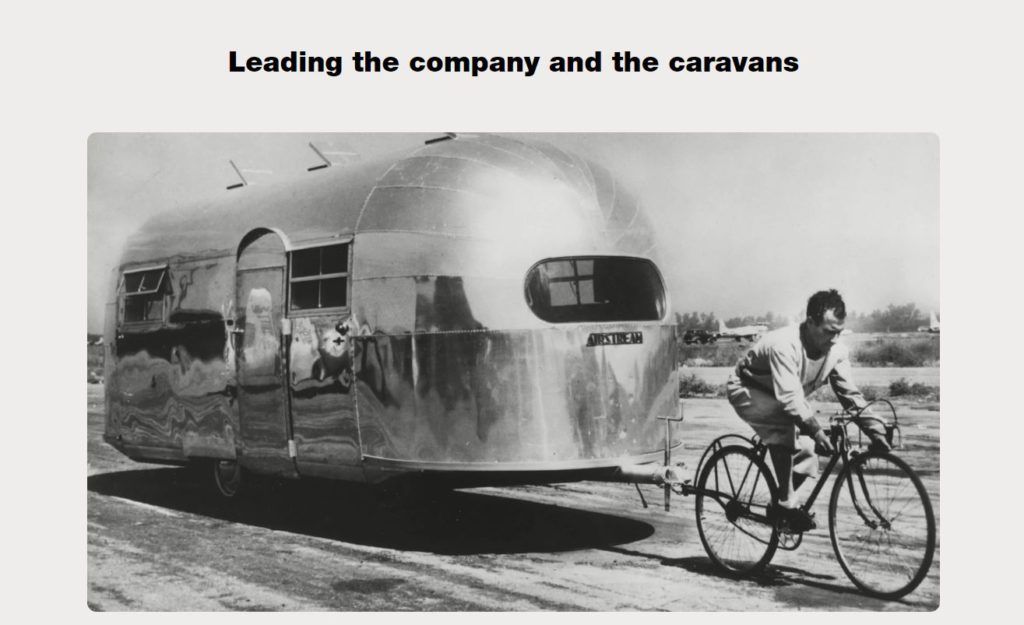
“A boom of more than 400 travel trailer companies started in the 1930s, but they soon trickled out. Only Airstream was left standing – already well known for the first riveted aluminium monocoque trailer, the Clipper.
Business was booming until World War II, when the factory had to close due wartime demands for all available aluminium.
During the war, Wally worked several jobs in the aviation industry, including as a certified manufacturing engineer and production supervisor at Curtis Wright Industries.
When the war ended in 1945, Wally persuaded the management at Curtis Wright to let him design and manufacture a line of travel trailers.
Always the creative marketer, Wally garnered interest in the new line by inviting the famous French cyclist Alfred Letourneur to visit the factory and tow a trailer with a bike to demonstrate its lightweight nature.
The picture became the famous Airstream logo”.
This is an amazing story and Airstream has managed to use it very well to tell the story of the company and attract people’s interest.
An outcome
The end doesn’t always have to be happy, sometimes telling the story of a failure can help us sell our solution better because the customer will know what can happen if he doesn’t put a solution to his problem, like, in the ads against drug abuse, for example.
This ad was very successful in the 90’s.
In the end we see a tear running down, that’s the end that awaits you if you take cocaine.
This ad is shocking because you see how that person sniffs a TV, a car, a trip to Paris, all her efforts disappear through her nose.
Storytelling to simplify concepts
In addition to motivating and creating community, storytelling also serves to better explain a complex concept.
If what you sell is a technical product or a new service that people find difficult to understand you can use a story as an example, and tell how your product has helped the protagonist.
This type of storytelling is often called case studies but if you embellish the case to make it more attractive, that case can become an interesting story that people actually want to read.
Do you remember when at school you could get an equation much better when the teacher gave you examples of real life?
Well, that’s what this is all about.
Let’s look at another example so that we can understand it better.
Accenture is a consultancy company. Their services are sometimes difficult to explain so they choose to tell case studies on their website so that potential clients can better understand how Accenture can help them.
On the link above they tell the story of Del Monte and how they helped the company to become more competitive. There is a challenge, a solution and a positive change.
These are the basic elements for a good story.
How to use the power of #storytelling to elevate your brand. #copywriting #DigitalMarketing #SmallBiz Share on XWhat makes a good story ?
There are several requirements for a story to be great and meet our goals. Let’s see them all.
The story must be:
Entertaining
If the story doesn’t hook the reader, he will stop reading.
To make it entertaining, don’t just talk about yourself, talk directly to your reader about something that concerns him or her and introduce elements that make him or her curious, so they are willing to find out more about what’s going to happen next.
Educational
It must contain an important learning; your story should teach something the reader didn’t know before.
Universal
The story must grab anyone because it touches universal human emotions.
Structured
There is a beginning, a knot and an outcome so that the reader doesn’t get lost.
Memorable
Whether they make people laugh, cry or they contain an element of surprise, the best stories are those that resonate in the reader’s mind even days after they’ve read/watched them.
The process to create storytelling
As we mentioned at the beginning of this post, storytelling is an art that improves with practice.
The process of creating stories, however, is always the same.
Let’s see it.
How to use the power of #storytelling to elevate your brand. #copywriting #DigitalMarketing #SmallBiz Share on X1. Define your audience
As we have seen on several occasions, in order to get your message across you have to know your target audience very well. It’s about knowing what motivates them.
Recommended reading How to create your buyer persona’s profile
2. Define your main message
What do you want to convey to your audience? What’s the main learning you want them to take away?
Let’s see an example.
Copywriting
The best-kept secret of advertising
It’s the secret weapon of some businesses with which they incite a customer to perform an action, like clicking on the subscription or buy button.
Let me explain to you what copywriting is with a very simple example. (I hope my boyfriend is not reading this😊).
Imagine that you want to go to Rome on holidays because your dream is to see the Sistine Chapel. But you know that your boyfriend doesn’t like art at all and hates queues.
To convince him you will list everything that Rome has to offer that you know he loves. The Rome stadium, pizza, ice cream, the Colosseum.
You take away all his objections showing him the photos of the beautiful hotel room whose rates are reduced just on those dates. You tell him that the flight times are perfect and that your friends Joe and Jane went and both loved it.
And you convince him.
This is also Copywriting and you can use it to sell more to international customers through your website, blog and email marketing.
3. Define the type of story you want to tell
There are several types of stories depending on the goal you have set at the beginning.
Let’s take a look at each of them.
Inciting an action
If you want to nudge the reader to do something concrete (buy a product, fill out a contact form), your story should describe how that same action was successfully implemented in the past and explain to readers that they too may be able to implement the same kind of change in their lives.
Avoid excessive and exaggerated details or getting off the subject, so that your audience can concentrate on the action or change your story conveys.
Make your personal brand known
Here you can tell an interesting and motivating story about yourself. A story that talks about genuine struggles, failures and victories.
Today’s consumers appreciate and connect with brands that come across as authentic, through the use of powerful storytelling.
Transmitting Values
Telling a story that talks about familiar situations and emotions so readers can understand how they can apply the story to their own lives.
This is especially important when talking about values that some people may not agree with or understand.
An exemplary case is that of Bill Gates, the creator of Microsoft.
His personal blog tells, using an exceptional narrative, how Mr Gates went from being the computer mogul to one of the world’s leading philanthropists.
The foundation he and his wife lead donates millions of dollars to fight disease in poor countries.
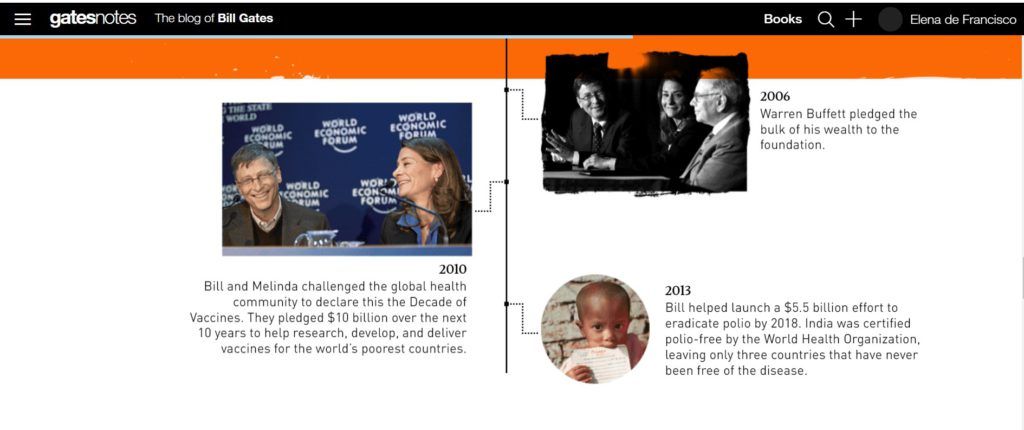
There is no doubt that the couple does this important work out of a genuine desire to help, but we cannot ignore the fact that this work also helps to sell more Microsoft products.
Foster community or collaboration
It’s about telling a story that moves readers to discuss and share their story with others. You can use a situation or experience that others can identify with and say, “I also feel the same way”.
How to use the power of #storytelling to elevate your brand. #copywriting #DigitalMarketing #SmallBiz Share on XSharing knowledge
With a story that presents a trial and error experience, so readers can learn about a problem and how a solution was discovered and applied. Better to present alternative solutions as well.
There is a movement that is dedicated precisely to narrating the blunders of entrepreneurs but also of sportsmen or actors.
It’s called Fuck Up nights and it’s about telling these blunders so that others can learn from others’ mistakes.
It’s a way of sharing knowledge and exposing our weaknesses in order to get closer to others and make them feel identified with our story.
4. Add a call to action
What exactly do you want your readers to do? Do you want them to donate money, subscribe to a newsletter, sign up for a course or buy a product?
Make sure the call to action is in line with the goal you set before writing your story.
For example, if your goal is to foster community or collaboration, the call to action might be to hit the share button on Facebook or LinkedIn by saying “Share this story”.
Choose your medium
A story can be told through a video, a photo with a description on Instagram and Facebook or it can be sent in an email.
It all depends on which resources you have and what you think will have the greatest impact on your target audience.
Video is a way to tell powerful stories, since images and music can create intense emotions as we have seen with Nike’s ad, for example.
But creating a video is expensive, and it’s not within everyone’s reach.
However, this doesn’t have to discourage you, because a great photo with a compelling text can reach a lot of people and touch strong emotions like videos.
Choose your medium, do extensive research of your audience and then work on your creativity and narrative power.
I’d love to hear your story!
How to use the power of #storytelling to elevate your brand. #copywriting #DigitalMarketing #SmallBiz Share on XFeatured Image by Anastacia Cooper from Pixabay


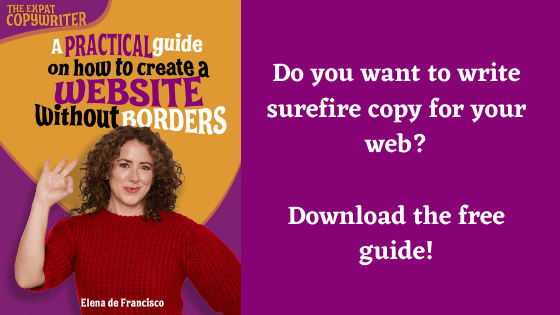
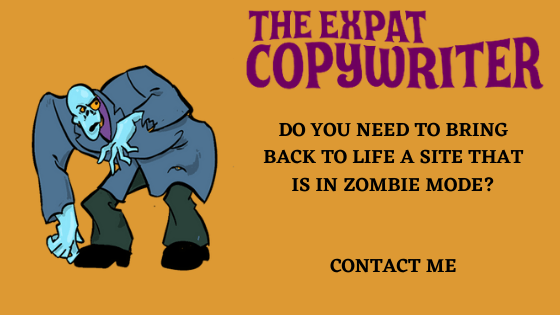
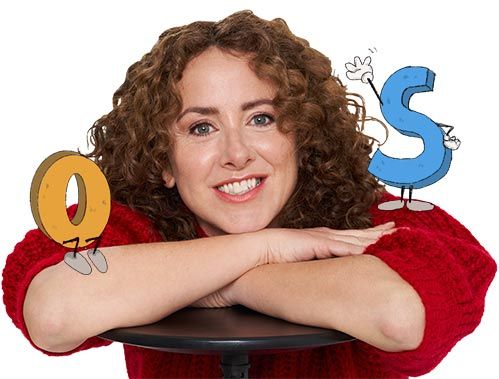
Wish you were around when I was working.
Thank you Pete for your nice words. I’m happy to hear my advice is useful in any way. Big hug